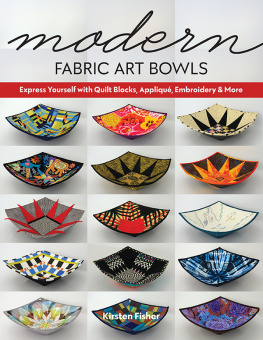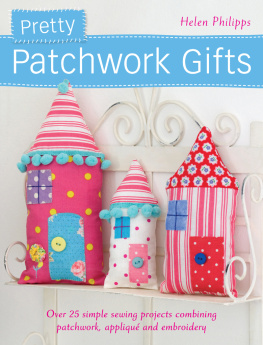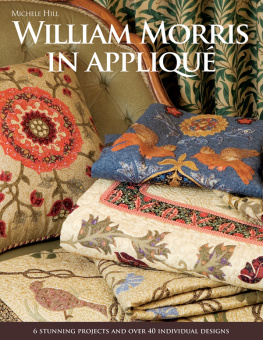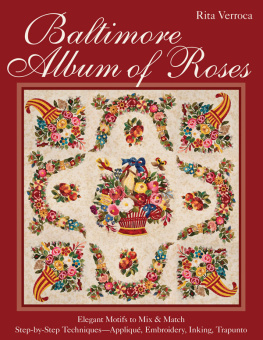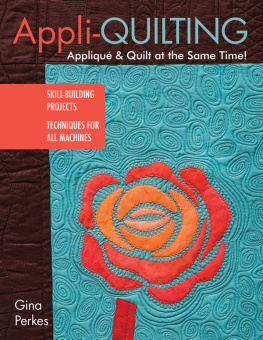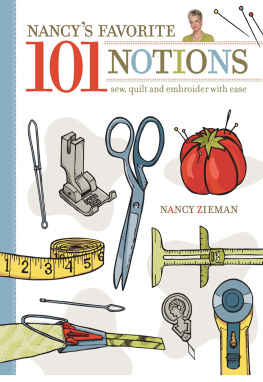Florence Daisy Collingwood - Applique embroidery
Here you can read online Florence Daisy Collingwood - Applique embroidery full text of the book (entire story) in english for free. Download pdf and epub, get meaning, cover and reviews about this ebook. year: 2019, genre: Romance novel. Description of the work, (preface) as well as reviews are available. Best literature library LitArk.com created for fans of good reading and offers a wide selection of genres:
Romance novel
Science fiction
Adventure
Detective
Science
History
Home and family
Prose
Art
Politics
Computer
Non-fiction
Religion
Business
Children
Humor
Choose a favorite category and find really read worthwhile books. Enjoy immersion in the world of imagination, feel the emotions of the characters or learn something new for yourself, make an fascinating discovery.
- Book:Applique embroidery
- Author:
- Genre:
- Year:2019
- Rating:3 / 5
- Favourites:Add to favourites
- Your mark:
- 60
- 1
- 2
- 3
- 4
- 5
Applique embroidery: summary, description and annotation
We offer to read an annotation, description, summary or preface (depends on what the author of the book "Applique embroidery" wrote himself). If you haven't found the necessary information about the book — write in the comments, we will try to find it.
Applique embroidery — read online for free the complete book (whole text) full work
Below is the text of the book, divided by pages. System saving the place of the last page read, allows you to conveniently read the book "Applique embroidery" online for free, without having to search again every time where you left off. Put a bookmark, and you can go to the page where you finished reading at any time.
Font size:
Interval:
Bookmark:

APPLIQU
EMBROIDERY
Techniques and projects

APPLIQU
EMBROIDERY
Techniques and projects
Florence Daisy Collingwood

CROWOOD
First published in 2019 by
The Crowood Press Ltd
Ramsbury, Marlborough
Wiltshire SN8 2HR
www.crowood.com
This e-book first published in 2019
Florence Daisy Collingwood 2019
All rights reserved. This e-book is copyright material and must not be copied, reproduced, transferred, distributed, leased, licensed or publicly performed or used in any way except as specifically permitted in writing by the publishers, as allowed under the terms and conditions under which it was purchased or as strictly permitted by applicable copyright law. Any unauthorised distribution or use of this text may be a direct infringement of the authors and publishers rights, and those responsible may be liable in law accordingly.
British Library Cataloguing-in-Publication Data
A catalogue record for this book is available from the British Library.
ISBN 978 1 78500 540 4
 CONTENTS
CONTENTS
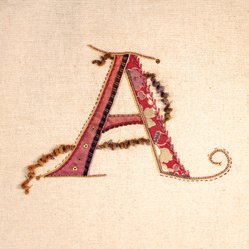
 ACKNOWLEDGEMENTS
ACKNOWLEDGEMENTS
W ith special thanks to my family: Ben, Minnie, Kitty and Rusty Collingwood, Dr Penelope Cave and Walter and Julianna Heale. Also to Sue and Donald Collingwood. Patience is often said to be essential when doing embroidery, but I think perhaps an embroiderers family often shows the most patience, particularly when needles are found in the most obscure places!
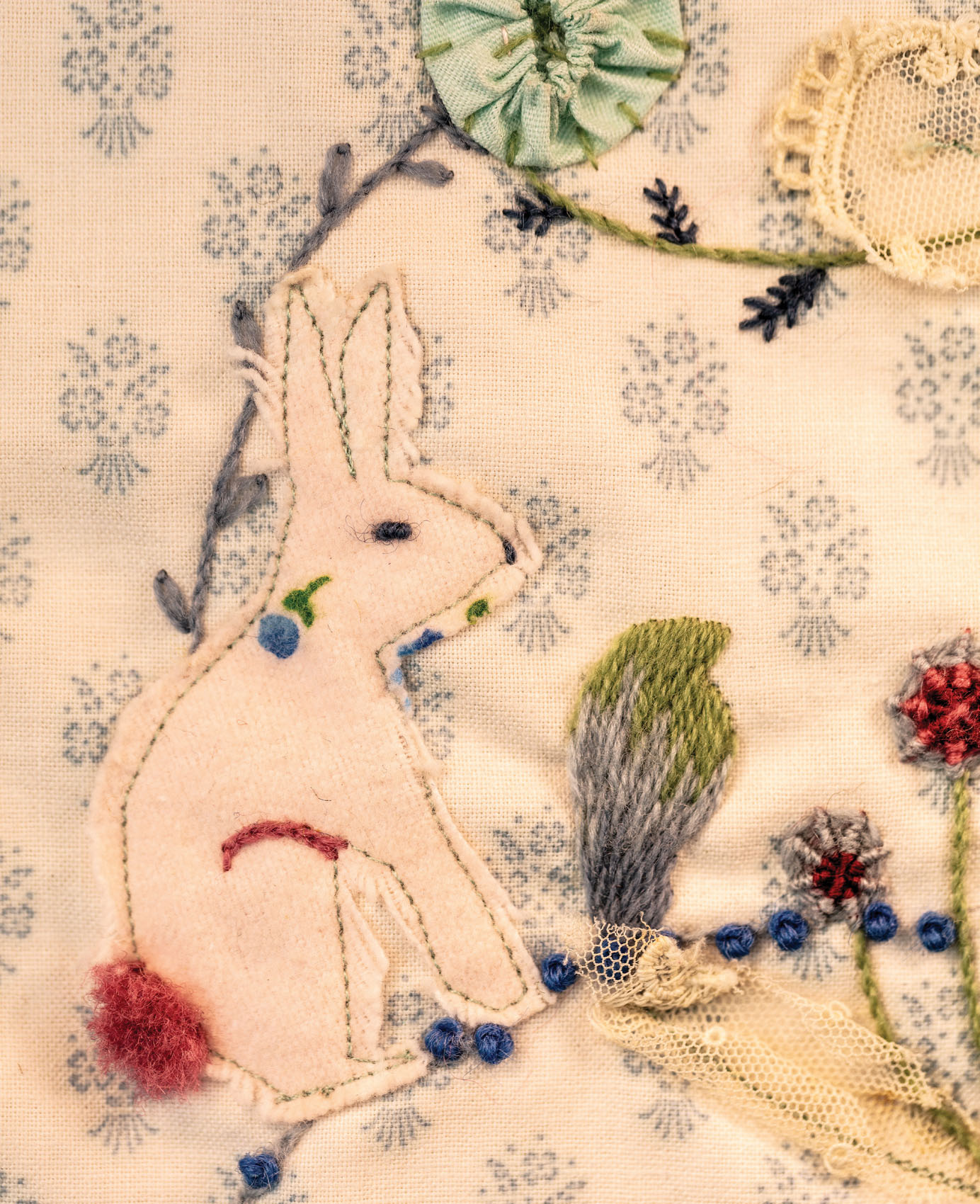
Rabbit applied cushion cover with machine stitch and Suffolk puffs.
Thank you to my good friend Patricia Herbig for all the wonderful proofreading and super stitching, and to Patricia Young for marvellous help with quotes and continuous encouragement. Joyce Spearings support has also been invaluable. I am very grateful to the lovely people who have given work for the book, friends as well as being colleagues or students; Jenny Adin-Christie, Nettie Rowsell, Jennifer Donovan, Rosie McKellar, Mags McCosher, Yana Krizka, Luisella Strona, Yvonne Rogers, Dee Jackson and Jackie Thompson. Sincere thanks go also to my dear friends, especially Emma Sneller and Helen McTeer, and also to Jo Scott and Becky Quine for all their advice on layouts and computer-related matters! Holly Cowan, Verity Overton-Smith, Claire Allfrey, Sammi Leese and Kirsty Chadwell who have supported in numerous ways.
With big thanks to professional photographer, Chris Orange, who took the wonderful full-size images in the book. I am also grateful to Rachel Midgley, at Gawthorpe Hall in Lancashire, for showing me around; I spent an inspiring few hours researching and looking through many appliqu pieces including those by Alice Edna Smith and Kathleen Mann, from their vast collection of over 38,000 embroidery pieces from the Rachel Kay Shuttleworth collection. A sincere and heartfelt thank you also to Margaret Harper who set me off on the journey of embroidery, as a profession, introducing me to the RSN many years ago.
Finally, I acknowledge the considerable influence of the Royal School of Needlework for all the inspiring and informative teaching and training I received during my apprenticeship, within the commercial studio and beyond, as I continue to teach and learn.
The hope is that this book may inspire and inform, and perhaps set the reader off on their own adventure into appliqu embroidery.

Florence Daisy Collingwood
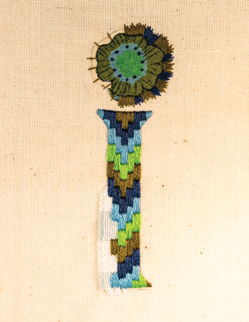
INTRODUCTION
The way to beauty is not by the broad and easy road; it is along difficult and adventurous paths. Every piece of craft work should be an adventure.
ETHEL MAIRET, 1916
A ppliqu is a wonderfully diverse subject that uses lots of different embroidery techniques and is also often included in quilted pieces of work. Although it is, at its most basic, simply a way of attaching or applying one fabric to another, within this there are many exciting ways to use this technique. The word originally comes from the Latin applicare and subsequently from the French appliqur, to apply. The word is pronounced two different ways and it seems to be up for debate as to which is the correct pronunciation: either applique or applique seem to be the two variations, perhaps depending whether the French or English slant is chosen.
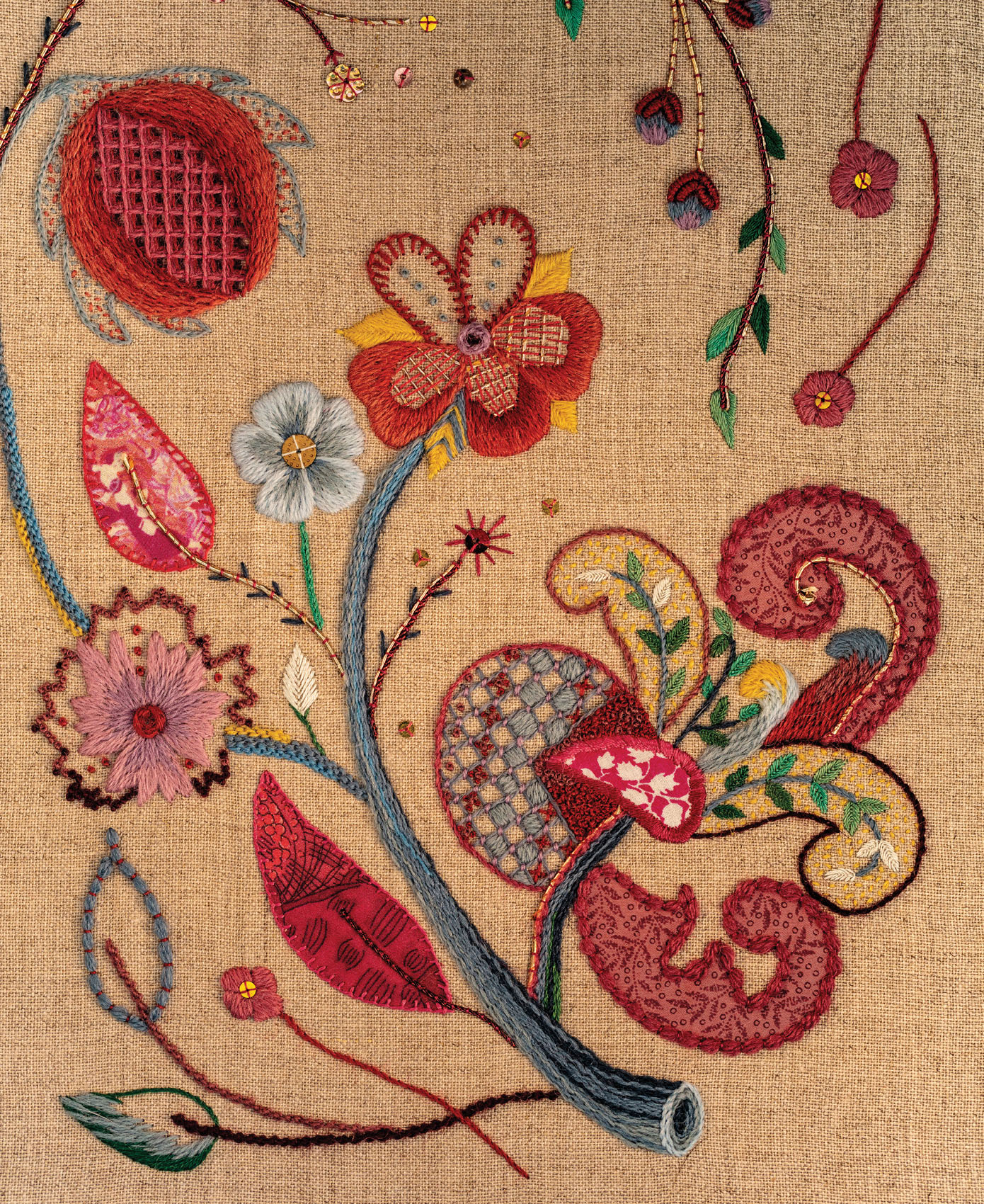
A more modern design has been worked using traditional crewelwork stitches, in stranded cottons with metalwork and applied fabrics.
Within the whole area of textiles, appliqu is best categorized as surface decoration, in contrast to a technique for example like pulled or drawn whitework embroidery, which is more of a surface forming technique, which produces a fabric rather than decorating it. The basic prerequisite of appliqu is a background fabric this could be anything from wool, linen, cotton or felt to fur or leather which can then be decorated with additional materials. Appliqu therefore follows a similar process to surface embroidery, i.e. working with appropriate materials on a background fabric. For both processes the type of stitch chosen is an important factor in the effectiveness of the motif and both appliqu and surface embroidery stitches work beautifully together, complementing one another and adding depth and texture to a design.
THE HISTORY OF APPLIQU
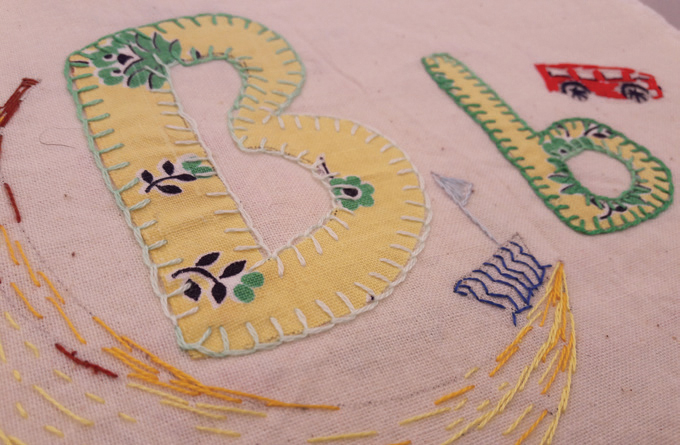
The B letter is part of a childrens book of the alphabet, applied very simply using buttonhole stitch, with surface stitches to decorate.
Appliqu developed in different ways, in different countries. In England it developed with surface embroidery as a way of decorating a design further; not only would patchwork be used but it might have a motif applied to it and then extra embroidery stitches added on top to create layers of interest and texture. But each country had different designs, colours and fabrics that they used and therefore different ways of using the basic idea of applying one fabric to another. The Egyptians are thought to have been the first to give it a go; here it was a practical technique being used on items for the home and for garments to wear. In the Middle Ages it was also used on ecclesiastical banners and clothing. In France fabric was glued to thin paper and then pressed until dry (a little like we use Bondaweb now) and then the motif was cut out, glued again and fixed to the background with simple stitches surface stitches being intrinsic to the technique from the very beginning, even with the use of lots of glue! A cord was then laid around the edge, much as we use couching on the transfer method of appliqu, and stitched invisibly in place. In Germany and Austria many wall coverings were made using appliqu techniques, a particular feature in the seventeenth and eighteenth centuries. Silk fabrics and ribbons were glued behind cut-outs from a cardboard stencil, the solid stencil parts becoming the fabric motif and a relief effect being created. Decoration beads, metal foil and metallic threads was added afterwards to give a richness to the work. Peasant clothing was also often covered with embroidery and appliqu; the traditional Austrian brown dirndl skirt, gold Linz cap and silk aprons were covered with decoration, and the use of appliqu on womens dresses developed from a basic craft to a sophisticated way of showing an increase in wealth and standing.
Font size:
Interval:
Bookmark:
Similar books «Applique embroidery»
Look at similar books to Applique embroidery. We have selected literature similar in name and meaning in the hope of providing readers with more options to find new, interesting, not yet read works.
Discussion, reviews of the book Applique embroidery and just readers' own opinions. Leave your comments, write what you think about the work, its meaning or the main characters. Specify what exactly you liked and what you didn't like, and why you think so.


